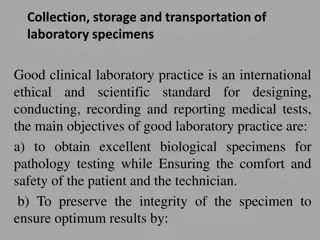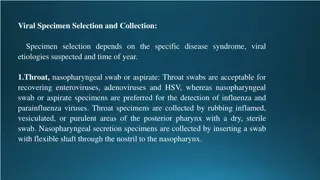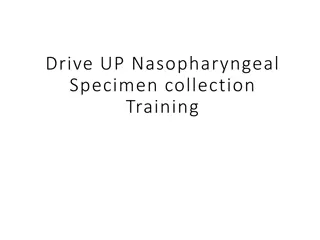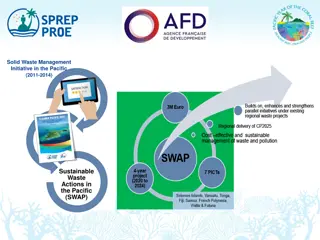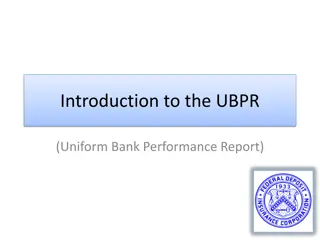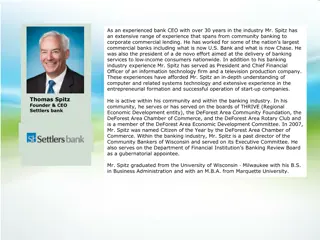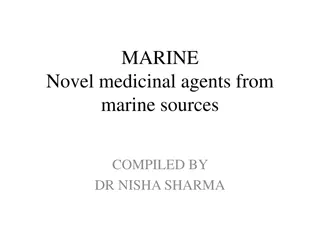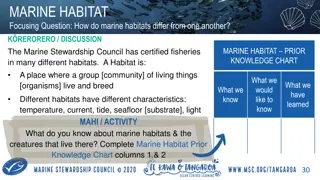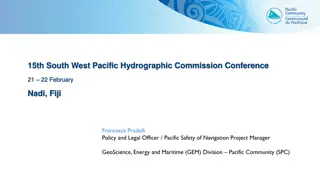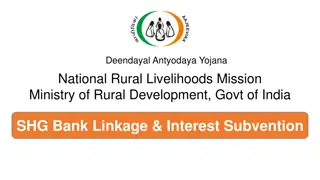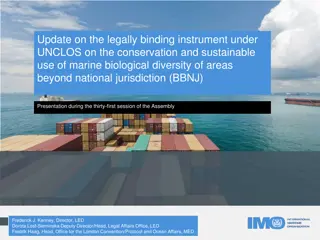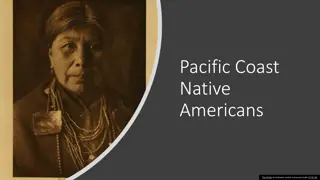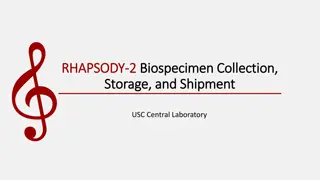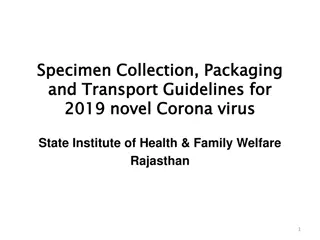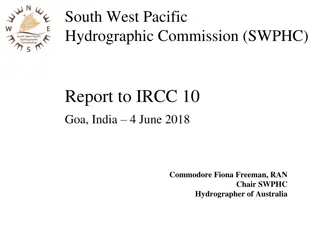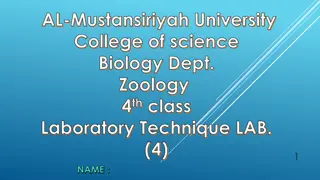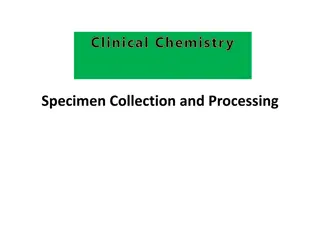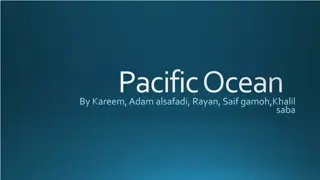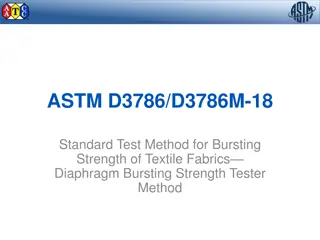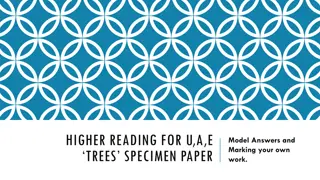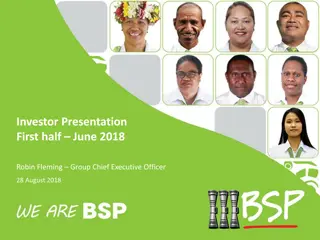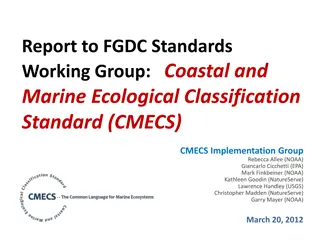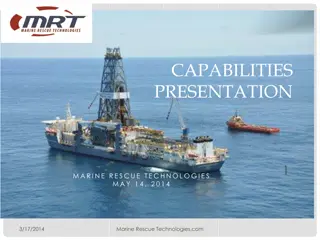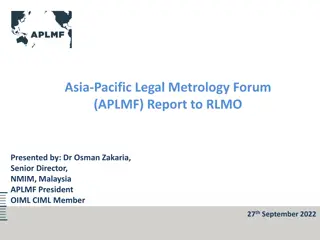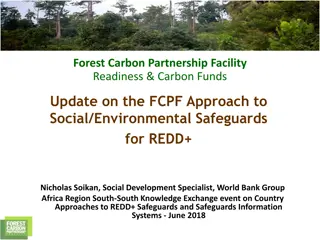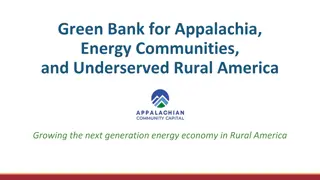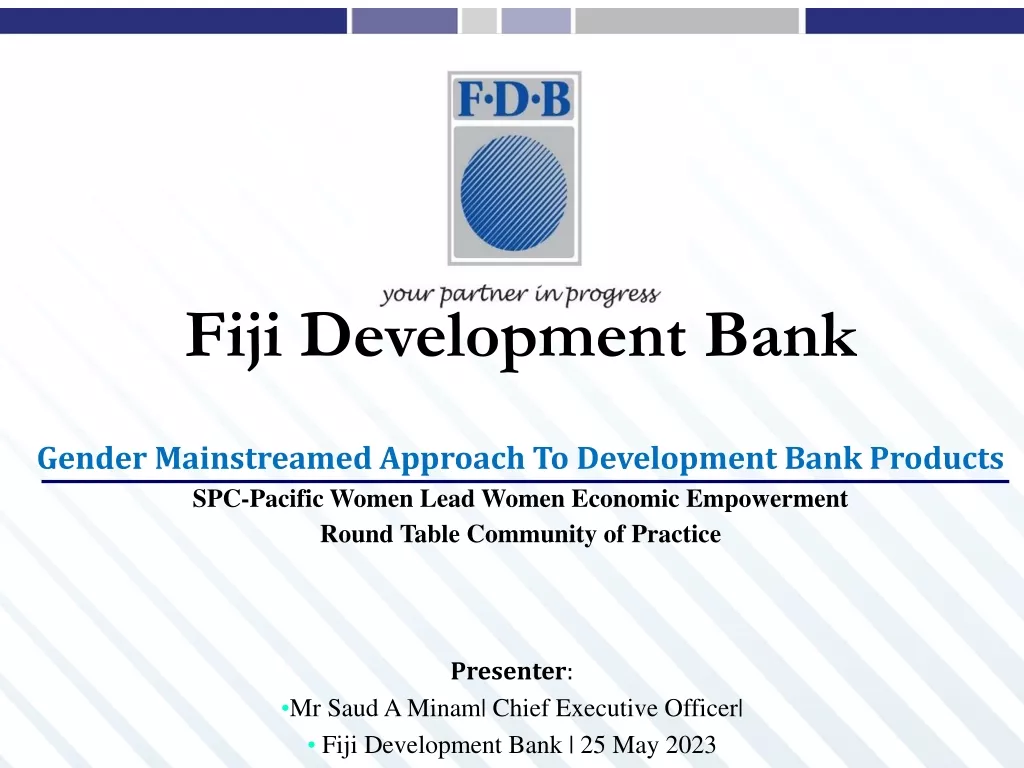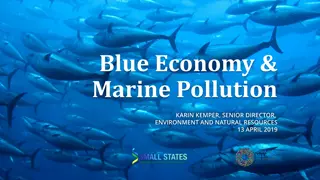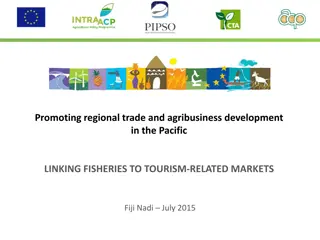Developing a Pacific Community Marine Specimen Bank and Case Studies
This information paper showcases the establishment of a Pacific Community Marine Specimen Bank, focusing on the WCPFC Tuna Tissue Bank and case studies on bigeye and yellowfin tuna. The paper discusses the importance of specimen banks, ongoing projects, challenges, and key research questions regarding these tuna species in the Pacific region.
Download Presentation

Please find below an Image/Link to download the presentation.
The content on the website is provided AS IS for your information and personal use only. It may not be sold, licensed, or shared on other websites without obtaining consent from the author. Download presentation by click this link. If you encounter any issues during the download, it is possible that the publisher has removed the file from their server.
E N D
Presentation Transcript
DEVELOPING A PACIFIC COMMUNITY MARINE SPECIMEN BANK 14-17 March 2017/SPC, Noumea Information Paper 7
Overview What is a specimen bank? The WCPFC Tuna Tissue Bank Case studies Why we need a better specimen bank Next steps
What is a specimen bank? COLLECT IDENTIFY STORE RESEARCH DATABASE SHARE
WCPFC Tuna Tissue Bank Recent science Current projects *Bigeye age and growth going into 2017 stock assessment *Feasibility of fine-scale stock structure for albacore, bigeye, yellowfin and skipjack *Mercury content in marlin and swordfish *Black marlin ecology *Observer sample quality assurance *Fatty acid content in tuna and swordfish
WCPFC Tuna Tissue Bank Pro Con Experience with tissue bank Only tuna/tuna-like species Existing observer sampling Limited specimen shelf-life Existing storage capacity Network of fisheries staff Limited onsite laboratory Limited storage space Links with IRD, CSIRO Protocols for approving specimen use Medium-term tuna samples Not leveraging key strength Limited number of samples Limited human capacity in curation and analysis
Case study bigeye tuna At what size do they reach sexual maturity? How old are bigeye tuna? Is there a sex-specific difference in growth rate? Is this pattern the same across the Pacific?
Case study yellowfin tuna Some studies suggest average mercury content in yellowfin has increased over time Public health perspective is that yellowfin tuna is more risky as a food source (too risky?) Is this the real story/true? Why is this occurring? Is it a new issue? Is it getting worse? Is it common across all tuna species? Does it also happen in the Pacific? Does it impact all the Pacific islands the same way?
Case study yellowfin tuna Uses existing tissue bank Integrates data from other studies Bioaccumulation with size Latitudinal gradient
Case study yellowfin tuna Remove size and sampling location biases from data Look at trends for area over 15 years No obvious or statistical trend
Case study sea cucumber A target of blue boats Tissue bank collections could lead to EEZ-specific (or finer) profiling of sea cucumber stocks Poaching could be genetically identified, leading to better prosecution of IUU fishing www.abc.net.au
Why we need a better specimen bank Expand scope - include coastal and include ecosystems Better storage - long- term storage for long- term monitoring, more structured storage for better access More analytical options laboratory equipment and human capacity Web-portal for regional access
Why we need a better specimen bank Regular curation and broad spectrum analysis at sample entry point to the bank, a continuous supply of high value data can answer your questions more quickly Develop a living laboratory with capacity development a day-to-day activity an excellent tool for the young generation of scientists of the Pacific to learn about and develop regional knowledge about the biological resources of their region for the livelihoods of their families and communities
Questions for a tissue bank - now Is heavy metal accumulation going to accelerate with ocean acidification? Where do those fish come from? Has population connectivity been affected by climate change?
Next steps Hear your views Undertake a project to develop a business case Seek seed funding for the full proposal Keep improving the WCPFC TTB in the interim


